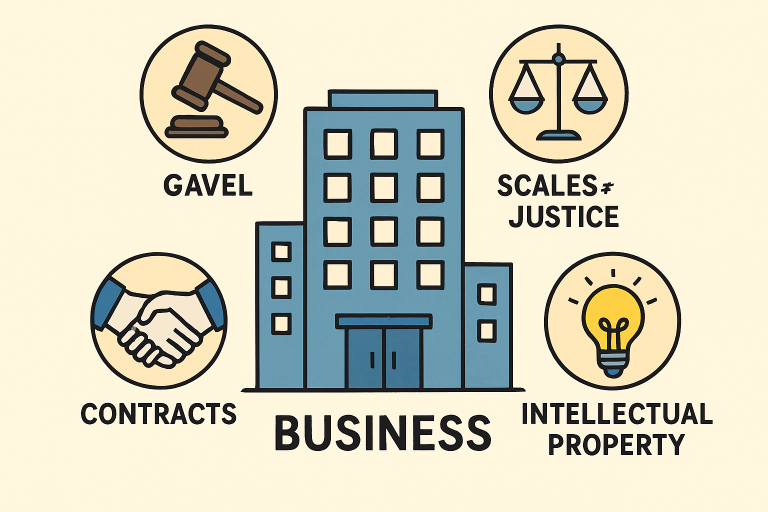Business
The Role of GPU Acceleration in JavaScript Chart Libraries

Web-based data visualisation is rarely judged on aesthetics alone; frame-rate, latency, and energy cost all influence user perception of quality. For the last decade most charts have depended on the CPU, but the surge of WebGL and WebAssembly support has pushed the graphics processing unit onto centre stage. Developers have long relied on JavaScript Charts to make sense of streaming metrics in the browser, yet many are only now discovering how deeply the GPU changes the performance equation.
A developer from SciChart confesses: “Treat the GPU as a parallel co-processor, not a magical black box. Benchmark initial paint, zoom, and pan with realistic data volumes, and choose a WebGL chart that exposes fine-grained control over buffer updates. Otherwise you risk moving the bottleneck rather than removing it.”
Why GPUs Are Changing Browser Visualisation
A modern mobile handset contains a GPU capable of billions of floating-point operations per second. While that raw horsepower has historically been reserved for games, the same silicon accelerates vector and raster workloads common in financial dashboards, scientific plots, and industrial telemetry. Offloading vertex transformations, colour interpolation, and blending to the GPU frees the CPU for business logic and network processing. In practice this translates into frame-times under 16 ms for charts with hundreds of thousands of data points, even on mid-range hardware. Energy efficiency improves too, because bulk maths completes sooner and clocks throttle down faster.
Browser vendors have embraced this shift. Safari, Chrome, Edge, and Firefox expose WebGL 2 by default, providing access to shader programmes, vertex array objects, and frame-buffer objects. These primitives mirror those in native OpenGL ES, so techniques honed on mobile apps port almost verbatim. A JavaScript library that wraps these low-level calls can therefore offer near-native throughput without the distribution friction of binaries.
Rasterisation to Low-Level API: A Quick Technical Primer
Before WebGL, HTML 5 canvas rendered charts pixel by pixel in software. Even when GPU compositing was available, the draw commands themselves still ran on the CPU. Enter WebGL: every series becomes a set of vertices streamed to the GPU, where vertex shaders transform coordinates and fragment shaders colour fragments. Line charts typically use instanced triangle strips, while scatter plots package positions into point sprites. Bar and column charts exploit hardware instancing to copy a single rectangle mesh thousands of times with varying heights.
Memory layout is pivotal. Interleaved float32 buffers allow coalesced reads within the shader, and index buffers avoid repeating vertices for adjoining segments. Textures store gradient ramps and marker glyphs, letting the GPU interpolate colours or sample icons with negligible overhead. Once the geometry lives in GPU memory, interactive operations such as zoom and pan mutate only a projection matrix—one 4×4 float32 uniform—rather than re-uploading the data. The result is silky navigation even when the underlying dataset is static.
Where JavaScript Meets the Graphics Pipeline
Binding JavaScript to WebGL is not free. Each draw call can cross the JavaScript–C++ boundary, and garbage-collecting typed arrays mid-frame triggers stutters. High-performance libraries batch series sharing the same shader into one draw call, update buffers in place, and reuse program handles. They also sidestep expensive safety checks by pre-validating parameters.
WebAssembly adds another dimension: heavy numerical preprocessing—DSP filters, Fourier transforms, outlier removal—executes at near-native speed, then passes the condensed result to WebGL. This keeps JavaScript event loops clear for UI work and reduces the volume of data marshalled into GPU buffers.
State management frameworks such as React can co-exist with this model. Rather than re-rendering SVG, a React component can act as a thin controller around an imperative WebGL chart surface. When props change, only the necessary buffer updates propagate, minimising reconciliation overhead. The separation keeps declarative UI benefits without sacrificing throughput.
React, WebGL and the Virtual DOM
Integrating a GPU-driven chart inside React introduces subtle challenges. The virtual DOM expects diffable markup, but WebGL surfaces are imperative canvases. Leading chart libraries provide a hook-based API that exposes a stable reference to the underlying chart instance. On mount the hook initialises buffers; on prop updates it patches series or axes; on unmount it disposes textures and shaders to prevent memory leaks.
The asynchronous nature of React’s concurrent mode demands caution. Any WebGL call after a canvas loses its context will throw, so libraries subscribe to the webglcontextlost event and recreate resources transparently. Accessibility layers sit above the canvas, offering ARIA tags and off-screen text equivalents for screen-reader compatibility.
Library Landscape: A Performance Survey
Numerous vendors now advertise GPU acceleration, but their approaches differ. Some wrap Three.js, turning every data point into a 3-D object; others write custom WebGL engines optimised for 2-D orthographic projections. Independent benchmarks show dedicated engines rendering a million-point line chart at 60 fps on a 2023 laptop, whereas wrapper approaches cap out nearer 10 fps once anti-aliasing and interactivity are enabled.
Across open-source offerings, regl-based projects excel at minimalism and shader flexibility, but demand GLSL expertise from the user. Proprietary options bundle tooling for annotations, legends, and export. When throughput dominates requirements, GPU-native SciChart.js and like-minded frameworks distance themselves from traditional canvas renderers, illustrating how different architectural choices compound in real workloads. In this context the term JavaScript Charts covers a spectrum from DOM-heavy SVG plots to fully immersive WebGL scenes.
Real-Time Telemetry at Scale: Benchmarks and Observations
Consider an oil-rig dashboard ingesting 100 k samples per second across dozens of sensors. CPU-bound canvas charts struggle once the total vertex count tops half a million. A GPU-accelerated library instead streams new data into a ring buffer on the GPU. The vertex shader applies scaling relative to the current viewport, so no CPU recomputation is needed when panning. Tests measuring end-to-end latency from socket receipt to plotted pixel show median values below 25 ms with negligible jitter. Engineers report a threefold increase in usable timespan before down-sampling becomes necessary.
On consumer notebooks the story repeats. Running a Monte Carlo options analysis that emits two million points, a WebGL line chart maintains 45 fps while keeping CPU utilisation under 30 %. Battery drain during a ten-minute interactive session stays within the envelope of typical web browsing, debunking the myth that GPU acceleration always costs more power. Such evidence strengthens the case for adopting accelerated JavaScript Charts in green-field projects targeting data-dense UIs.
Edge Cases and Caveats: Memory, Battery and Accessibility
No technology is without trade-offs. Text rendering remains a common pain-point: GPUs excel at bitmaps, yet crisp, scalable text often still falls back to CPU drawing or multisampled textures. Excessive texture atlases bloat VRAM particularly on integrated GPUs with shared memory. Developers must budget for double-buffering during smooth animations, potentially doubling memory footprints.
Mobile Safari imposes per-tab memory ceilings; exceeding them leads to a forced reload and a poor user experience. Progressive degradation strategies include adaptive LOD (level of detail) and heuristics that decimate off-screen points. Energy consumption, while generally lower per frame, can spike during shader compilation or uniform uploads if poorly batched. Monitoring tools like Chrome’s Performance pane and macOS Energy tab remain essential in the optimisation loop.
Accessibility demands semantic alternatives for colour-blind users and screen-reader navigation. Libraries that expose a data model separate from their render layer enable developers to generate ARIA tables on demand. Without such hooks GPU acceleration alone cannot deliver an inclusive experience.
The WebGPU Horizon and What It Means for Libraries
WebGPU, now shipping in stable Chrome and Edge, offers a more modern shading language, explicit memory management, and compute shaders. For chart libraries it promises two immediate gains: faster buffer uploads through mapped ranges and the ability to execute reduction operations, such as min-max aggregation, directly on the GPU via compute passes. Early prototypes show 30 % lower frame-times on large candlestick charts where OHLC reduction happens entirely in a compute shader before rasterisation.
Migrating from WebGL to WebGPU, however, entails a ground-up rewrite. The shader dialect WGSL differs from GLSL, and the explicit pipeline state model demands more boilerplate. Established vendors are experimenting with abstraction layers that compile one chart specification to either backend depending on browser support, allowing gradual adoption without fragmentation.
As standards mature, hybrid engines may call WebGL for raster and WebGPU for compute, blending backward compatibility with cutting-edge features. The table-stakes for competitive libraries will likely shift from mere GPU support to how efficiently they wield parallel compute for pre-processing.
Conclusion
GPU acceleration has moved from novelty to necessity for browser-based visualisation where data volumes or refresh rates exceed the comfort zone of the CPU. Understanding the graphics pipeline, memory constraints, and evolving standards is now part of a chart developer’s job description. Libraries that abstract the rough edges while exposing low-level hooks give teams the best of both worlds: productivity and performance. As WebGPU becomes mainstream the gains will compound, and JavaScript Charts that neglect the GPU risk obsolescence. In the meantime, measuring real workloads, profiling with the right tools, and selecting battle-tested engines remain the surest route to fluid, responsive, and energy-efficient visual analytics.
Business
Bridging Offline Assets With Online Management Systems

Organizations continue to use physical assets—documents, equipment, inventory, and on-site records—in addition to their digital assets. Although these physical assets are important to the organization, the manual management of these assets can slow down the organization’s daily operations and introduce more opportunities for human error. As an organization continues to grow, it will become increasingly difficult for that organization to keep track of all the physical assets that they have, where those assets are located, and what they look like.
With the integration of online tools and offline tools, processes are now managed and scaled much more easily. Organizations can now log, monitor, and update their offline assets through centralized management software, reducing anxiety due to unreliability and minimizing repetitive work efforts. Employees will now have clearer oversight of the work they do, improved access to their work and the flexibility to work with their coworkers as well. The ultimate goal of connecting offline physical assets with online management systems is not to eliminate offline physical resources but rather to provide a simpler, easier, and more efficient way for organizations to control, understand, and incorporate offline physical resources into today’s working environments.
Understanding Offline Assets
Offline assets include physical items that organizations rely on every day, such as paper records, equipment, tools, inventory, and on-site resources. These assets often hold critical value, but they are harder to track when information is scattered across folders, storage rooms, or different locations. As operations grow, this lack of visibility can lead to misplaced items, duplicated purchases, or delays caused by missing information.
Understanding offline assets starts with recognizing how they are used and who depends on them. Some assets are accessed daily, while others are only needed occasionally but still require proper tracking. When ownership, location, or condition is unclear, small issues can quickly turn into larger operational problems. Creating a clear inventory and usage overview helps teams identify what matters most and where gaps exist.
By clearly defining offline assets, organizations can prepare them for smoother integration with online systems. This step does not require advanced technology at first. Even basic categorization and documentation create a foundation for better control, improved accountability, and smarter planning as digital tools are introduced.
FAQ
What counts as an offline asset?
Physical items like documents, equipment, inventory, and tools used on-site.
Why are offline assets hard to manage?
They rely on manual tracking and are often spread across locations.
Do small organizations have offline assets?
Yes, even small teams use physical records and equipment daily.
Is organization possible without technology?
Basic organization helps, but digital systems improve consistency.
Digital Management Basics
Digital management systems help organize information about physical assets in one accessible place. These systems store details such as location, status, ownership, and usage history, making it easier to manage resources without relying on memory or paper notes. The goal is not complexity, but clarity and consistency.
One-day use case:
Imagine a regular workday at a growing organization. In the morning, a team member checks an online dashboard to see which equipment is available before starting tasks. A document stored on-site is logged digitally, showing who last accessed it and where it is kept. During the day, updates are made in real time when items are moved or used. By afternoon, a manager reviews the system to confirm everything is accounted for without walking through storage areas. At the end of the day, the system reflects accurate information, helping the next shift start smoothly. This simple daily flow reduces confusion, saves time, and keeps everyone aligned without extra effort.
Digital management works best when systems are easy to use and consistently updated. When teams trust the system, it becomes a natural part of daily operations rather than an extra task. Over time, this structure supports better planning, fewer errors, and smoother coordination between physical and digital workflows.
Connecting Physical and Digital
The most effective way to connect physical assets with digital systems is to focus on simplicity first. A solution works best when it fits naturally into daily routines rather than forcing teams to change how they work overnight. Physical items do not need to be fully digitized to gain value from online systems. What matters is creating a clear link between what exists offline and how it is tracked online.
Start with visibility
Begin by deciding which assets need regular oversight. Equipment, files, or materials that move often should be logged and updated consistently. Digital records act as a reference point, helping teams know where items are and who is responsible for them. For assets that are not used daily, storing them securely while maintaining digital access to their details keeps operations smooth. Using an option like Western Way Cir business units NSA Storage allows organizations to keep physical items protected while managing access and records online.
Build habits, not complexity
The real value comes from habits. When updates become part of normal workflows, systems stay accurate without added effort. This balanced approach connects offline assets with online management in a way that feels practical, flexible, and easy to maintain.
Everyday Operational Benefits
Bridging offline assets with online systems quickly improves daily operations. Teams spend less time searching for items and more time focused on meaningful work. Clear records reduce confusion and help avoid repeated mistakes.
Faster coordination
When everyone has access to the same up-to-date information, coordination improves. Tasks move forward without delays caused by missing assets or unclear ownership.
What works in practice:
Organizations that assign simple update rules see better results. Items are logged when moved, accessed, or stored, keeping records accurate with minimal effort.
Better decision-making
Reliable data supports smarter decisions. Managers can plan usage, reduce waste, and anticipate needs without relying on guesswork. These benefits compound over time, creating smoother workflows and stronger operational control.
Reducing Errors and Costs
Connecting offline assets with online systems helps organizations reduce costly mistakes and improve overall efficiency. Errors often happen when information is stored in different places or relies on memory instead of clear records. Digital oversight creates a single reference point, making it easier to verify details and prevent misunderstandings before they affect operations.
Fewer mistakes through clarity
When asset information is visible and updated, teams avoid common errors such as double booking, misplaced items, or unnecessary replacements. Clear records reduce back-and-forth communication and help employees act with confidence. Over time, this clarity lowers operational friction and builds trust in daily processes.
Smarter cost control
Cost savings come from better awareness. Knowing what assets exist and how often they are used helps organizations avoid overspending. Maintenance becomes more predictable, and replacements are planned instead of rushed. This structured approach supports steady budgets and more accurate forecasting.
Common questions answered:
There are many questions that teams have about digital tracking. Smaller teams should definitely be using digital tracking methods as they make it much easier for them to manage their workflow. When you use a digital method, you will automatically reduce the number of errors you encounter due to being able to centralise data in an easily accessible way. Many people question if digital methods replace the need for physical checks. The answer is that they do not replace them, they supplement them. Many teams ask how quickly they will see savings after implementing a digital tracking solution. Most teams will see positive results within the first few weeks of using a digital solution because they will typically see fewer errors and delays.
Moving Forward With Confidence
Bringing physical assets and digital tools together creates stronger foundations for growth. The goal is not perfection but progress through better visibility, smarter planning, and consistent habits. As systems improve, teams spend less time correcting mistakes and more time focusing on meaningful work.
If your organization manages physical resources daily, now is the right moment to rethink how information flows. Small improvements can unlock long-term benefits and reduce ongoing costs. Bridging Offline Assets With Online Management Systems is a practical step toward clarity, efficiency, and resilience. Consider what one change today could simplify your operations tomorrow.
Business
How Business Law Shapes Your Company’s Growth

Business law provides the framework guiding companies through startup, daily operations, and growth. For entrepreneurs, legal requirements can seem overwhelming, but understanding core principles protects from lawsuits and fines, and helps make informed decisions, build trust, and grow. Knowing how laws work in practice helps avoid pitfalls and leverage legal strategies for funding, partnerships, and innovation. Whether starting or expanding, the right legal approach is vital for sustained success amid market and regulation changes. If you are seeking guidance for your business, connecting with a qualified Colorado business attorney can help you navigate complex legal landscapes with confidence and safeguard your company’s long-term interests.
Business law has a significant impact on company operations, influencing enterprise structuring, contract drafting, intellectual property protection, and regulatory compliance. A robust legal environment facilitates effective risk management and asset protection, informing strategic decisions in new markets and partnerships. By incorporating legal considerations, businesses gain a competitive edge, enhance operational efficiency, and foster credibility, thereby enabling them to capitalize on opportunities. A proactive legal strategy is essential for navigating complex issues, such as employment law and mergers, to support informed decision-making and effective governance. The text underscores the importance of business law in promoting sustainable growth through practical strategies for leaders.
Legal Structure and Formation
The structure of your business—whether a sole proprietorship, partnership, LLC, or corporation—fundamentally shapes its future, influencing everything from daily decision-making to succession planning. Each model has unique impacts on ownership liability, tax obligations, fundraising abilities, management structures, and the ease with which partners can be brought in or ownership transferred. Business law defines the procedures for selecting and registering a business entity, outlining the frameworks that support equity distribution, board composition, and stakeholder roles to ensure clarity and regulatory legitimacy. Choosing the right entity is not a one-size-fits-all process; it requires balancing flexibility with liability protection and long-term strategic goals while also considering the industry’s customary practices, potential investors’ expectations, and your exit strategy. A decision made at the outset may have lasting effects, impacting profitability, agility, and compliance costs for years to come. For more information, the U.S. Small Business Administration offers an overview of common business structures and their associated legal considerations.
Contracts and Agreements
Contracts serve as the guardrails of the business world, setting clear expectations for all parties, including customers, suppliers, investors, and employees. Properly drafted contracts minimize risks by clearly articulating obligations, payment terms, dispute processes, confidentiality, and exit clauses—thereby preventing misunderstandings or costly breakdowns in crucial relationships. Business law makes these agreements legally binding and enforceable, providing avenues for dispute resolution or recourse if one party fails to fulfill their obligations. This legal rigor fosters not just trust but also accountability—a necessity for healthy long-term business relationships. Strong contracts anchor your key relationships and open the path to productive collaborations while reducing the likelihood of expensive, reputation-damaging litigation that can derail your business’s momentum.
Employment Law Compliance
As businesses expand from a handful of founders to larger teams, compliance with employment law becomes crucial for managing risk and fostering a healthy, productive culture. Statutes around minimum wage, overtime eligibility, workplace health and safety, anti-discrimination policies, and vacation or medical leave not only protect workers but also create predictable operational standards for managers. Proactively upholding these laws not only reduces the risk of costly lawsuits and government penalties but also demonstrates a commitment to workplace equity and fairness. A well-informed approach to employment law helps businesses attract and retain top talent, boost morale and loyalty, and proactively prevent internal conflicts. The U.S. Department of Labor provides updated resources on employment legal requirements, enabling you to stay informed about new laws and regulations in your industry and region.
Protecting Intellectual Property
Intellectual property (IP) is often at the heart of a company’s competitive edge, whether it’s a patented invention, a distinctive brand, a unique work of authorship, or proprietary technology. Business law provides mechanisms—such as patents, trademarks, and copyrights—for protecting these non-physical assets from theft, infringement, or misuse by competitors. Without strong IP protection, businesses risk losing their market position, valuable revenue streams, or even the ability to enforce their rights in court. Registering and actively defending your IP rights not only preserves your innovations but also increases the value and attractiveness of your company to investors, partners, and acquirers. Businesses that prioritize a robust IP strategy benefit from an enhanced reputation, streamlined licensing, and opportunities in collaborative ventures, all while preventing costly infringement lawsuits or the loss of proprietary knowledge.
Corporate Governance and Fiduciary Duties
Effective corporate governance ensures responsible decision-making and transparency, aligning the actions of directors and officers with the interests of all stakeholders. Business law prescribes explicit standards for the conduct of board meetings, the frequency and details of financial reporting, shareholder rights, and executive disclosures. It also mandates fiduciary duties—good faith, unwavering loyalty, and prudent care—demanding that those in charge act in the company’s best interest, not for personal gain. Strong governance policies ensure the organization remains stable during times of change and attracts investors who value clarity, integrity, and consistent financial performance. Robust governance lays the foundation for a culture of accountability and ethical leadership, supporting the company’s sustainable growth and fostering market trust.
Regulatory Compliance
Every industry and market carries its own set of legal responsibilities, multiple layers of oversight, and ongoing compliance requirements that often evolve as laws change. For example, healthcare firms must protect patient privacy through HIPAA, while financial companies must uphold strict regulatory reporting under laws such as Dodd-Frank and Sarbanes-Oxley. Non-compliance can result in massive fines, loss of operational licenses, exclusion from key markets, or, in severe cases, criminal prosecution for responsible parties. Adhering to regulatory requirements is not only a legal imperative but also a competitive differentiator, assuring your customers, partners, and regulators that your business operates with integrity and reliability. Regular audits, policy updates, and ongoing staff training are essential to maintaining compliance—and staying ahead of changing legal standards supports long-term viability and trust.
Mergers, Acquisitions, and Expansion
Growth through mergers and acquisitions (M&A), joint ventures, or expansion into new geographic markets presents both significant opportunities and legal complexities. Skilled legal counsel is crucial at every stage, from due diligence—uncovering hidden financial or regulatory risks—to negotiating deal terms, drafting comprehensive purchase agreements, and managing the transition under antitrust and foreign investment laws. Thorough legal oversight in M&A transactions ensures your company is protected from surprises, reduces deal friction, and lays a strong foundation for integration and post-transaction growth. Expansion requires a systematic review of local laws and permits, labor standards, and tax obligations—each facet needing careful legal planning to support robust, compliant growth in new markets.
Dispute Resolution and Litigation
No business can avoid conflict, making effective dispute resolution processes crucial for minimizing disruption. Business law provides structured options—ranging from informal negotiations and mediation to arbitration and litigation—tailored to varying disputes. These methods conserve resources compared to prolonged lawsuits, protect partnerships, and reduce reputational harm. By incorporating legal dispute protocols into corporate policies, companies can address conflicts swiftly and fairly, thereby enhancing their resilience against challenges. Additionally, comprehensive business law guidance serves as a protective measure, promoting innovation and sustainable growth. Acknowledging law’s role across business development phases enables leaders to build adaptable organizations that can thrive in dynamic environments and meet future demands.
Final Thoughts
A deep understanding of business law is more than a safeguard—it’s a strategic asset that supports every stage of a company’s growth. From formation and intellectual property protection to governance, compliance, and dispute resolution, each legal element works together to create stability, trust, and accountability. Proactively integrating legal oversight into daily operations not only minimizes risk but also enhances efficiency, investor confidence, and long-term sustainability. Businesses that treat legal compliance as a foundation rather than an afterthought are better equipped to adapt, innovate, and lead with integrity in an ever-evolving marketplace.
ALSO READ: Maasgracve: Your Guide to the Latest Trends in Business
Business
Maasgracve: Your Guide to the Latest Trends in Business

In today’s rapidly evolving market, the concept of maasgracve has emerged as a pivotal force shaping modern business strategies. This approach is not just another buzzword but a fundamental shift in how companies aggregate and leverage resources. Understanding maasgracve is essential for any organization aiming to stay competitive and relevant. It represents a move towards integrated, data-informed systems that prioritize flexibility and customer-centricity. Businesses that ignore this trend risk being left behind by more adaptable competitors. Embracing the principles of maasgracve can unlock new levels of efficiency and innovation.
What is Maasgracve in Business?
Maasgracve in a business context describes a holistic strategy focused on creating cohesive ecosystems from disparate parts. It is the practice of weaving together various services, data streams, and customer touchpoints into a single, seamless experience. This methodology moves beyond siloed departments and fragmented processes, advocating for a unified operational model. The core of maasgracve is integration, ensuring that every element of the business works in harmony toward a common goal. Companies adopting this model often see improvements in agility and a stronger market position. It is, essentially, the architectural blueprint for the future of business.
The Core Principles of Maasgracve
The maasgracve framework is built upon several key principles that guide its implementation. Central to this is the idea of connectivity, ensuring all systems and teams can communicate and share data effortlessly. Another principle is adaptability, allowing businesses to pivot quickly in response to market feedback or new opportunities. Customer focus is paramount, with every integrated function designed to enhance the end-user’s journey and satisfaction. Data-driven decision-making forms the backbone, replacing intuition with actionable insights gathered from across the organization. These principles work in concert to create a resilient and responsive business structure.
Implementing Maasgracve in Your Operations
Putting maasgracve into action requires a deliberate and phased approach to avoid disrupting existing workflows. Begin by conducting a full audit of your current systems to identify points of disconnect and opportunities for integration. Invest in middleware and platform solutions that allow your different software applications to communicate effectively. Foster a company culture that breaks down silos and encourages collaboration between departments like marketing, sales, and customer service. Start with a pilot project to demonstrate the value of a unified approach before rolling it out company-wide. Successful implementation turns the theoretical model of maasgracve into a tangible competitive advantage.
How Maasgracve Drives Innovation
Adopting a maasgracve mindset is a powerful catalyst for innovation within an organization. By breaking down internal barriers, it allows for the free flow of ideas, leading to unexpected and creative solutions. This integrated approach provides a complete view of the customer, revealing unmet needs and opportunities for new products or services. It encourages experimentation with new business models, such as subscription services or platform-based offerings, that were previously impossible with fragmented systems. The synergy created by a maasgracve structure often results in a faster time-to-market for new initiatives. It transforms the business into a living lab for continuous improvement.
The Role of Technology in Maasgracve
Technology is the essential enabler that makes the maasgracve model feasible and scalable at a modern company. Cloud computing platforms provide the foundational infrastructure for integrating various tools and storing vast amounts of data. APIs (Application Programming Interfaces) act as the connective tissue, allowing different software to share information and functionality automatically. Advanced analytics and AI tools are then used to make sense of this unified data, generating the insights that drive strategic decisions. Cybersecurity measures are integrated from the start to protect this interconnected ecosystem. Without the right technology stack, the vision of maasgracve remains out of reach.
Measuring the Success of Maasgracve
Evaluating the impact of a maasgracve initiative requires looking at a blend of quantitative and qualitative metrics. Key Performance Indicators (KPIs) should reflect the integration’s goals, such as reduced time-to-market for new products, improved customer lifetime value, and higher employee cross-collaboration. Monitor operational efficiency metrics like process cycle times and cost savings from eliminated redundancies. Customer satisfaction scores and net promoter scores are crucial for gauging the external impact of a more seamless experience. Regularly tracking these metrics will show the return on investment and guide further refinements to the strategy.
Avoiding Common Maasgracve Pitfalls
While the benefits are significant, the path to a successful maasgracve integration is lined with potential missteps that can derail progress. A common error is attempting to do too much too quickly, leading to employee burnout and system overload. Under-communicating the vision and benefits to staff can create resistance, as people fear change and the unknown. Neglecting to invest in proper training on new integrated systems ensures they will be underutilized or misused. Failing to secure buy-in from leadership across all departments can result in a lopsided and ineffective implementation. Awareness of these pitfalls is the first step toward avoiding them.
The Future of Business is Maasgracve
Looking ahead, the principles of maasgracve are set to become the standard operating procedure for successful enterprises. As technology continues to evolve, the ability to integrate and automate will only become more sophisticated and accessible. We can expect to see businesses competing not on individual products, but on the strength and seamlessness of their entire ecosystem. The demand for personalized, instant experiences from consumers will make the maasgracve approach not just an advantage, but a necessity. Companies that master this model today are effectively future-proofing their operations for the challenges and opportunities of tomorrow.
Conclusion
The transition to a maasgracve-oriented business is no longer a niche strategy but a central requirement for sustained growth and innovation. This integrated model offers a clear path to overcoming operational silos and delivering exceptional value to customers. While the journey requires commitment, investment, and cultural shift, the payoff in resilience and market leadership is immense. By viewing your organization as a connected ecosystem, you unlock potential that fragmented approaches can never achieve. The future belongs to businesses that are unified, agile, and customer-obsessed. Maasgracve provides the framework to build that future, starting now.
Frequently Asked Questions
What is the simplest definition of maasgracve in business?
Maasgracve is a strategic approach that integrates a company’s disparate parts into a unified, efficient, and customer-focused ecosystem.
Is maasgracve only relevant for large corporations?
No, businesses of all sizes can benefit from maasgracve principles to improve their internal operations and customer experience.
What is the first step to adopting a maasg’racve model?
The first step is to audit your current systems and processes to identify key areas of disconnect and opportunity for integration.
How does maasgracve improve customer experience?
It creates a seamless journey by ensuring all customer touchpoints are connected and share information, leading to more personalized and efficient service.
Can a company be successful without using maasgracve?
While possible, operating without an integrated maasgracve strategy often leads to inefficiencies and a weaker competitive stance in the modern market.
-

 Sports10 months ago
Sports10 months agoThe Ultimate Guide to Ski and Snowboard Equipment, Ski Equipment Rental, and Snowboard Equipment Rental
-

 General1 year ago
General1 year agoStart-094: Unlocking Its Secrets and Understanding Its Power
-

 Entertainment1 year ago
Entertainment1 year agoHulu Error Code Rununk13: A Complete Guide
-

 Entertainment11 months ago
Entertainment11 months agoSoaper.tv: A Comprehensive Guide to Your Streaming Companion
-

 General10 months ago
General10 months agoWindstream Email: Features, Setup, and Troubleshooting
-

 Technology1 year ago
Technology1 year agoWhy SBCodez is the Go-To Resource for Aspiring Coders
-

 Games11 months ago
Games11 months agoPizza Edition Games: The Ultimate Guide to Fun and Flavor
-

 Uncategorized10 months ago
Uncategorized10 months agoOceanofPDF: Free eBooks Source or Copyright Violation?
